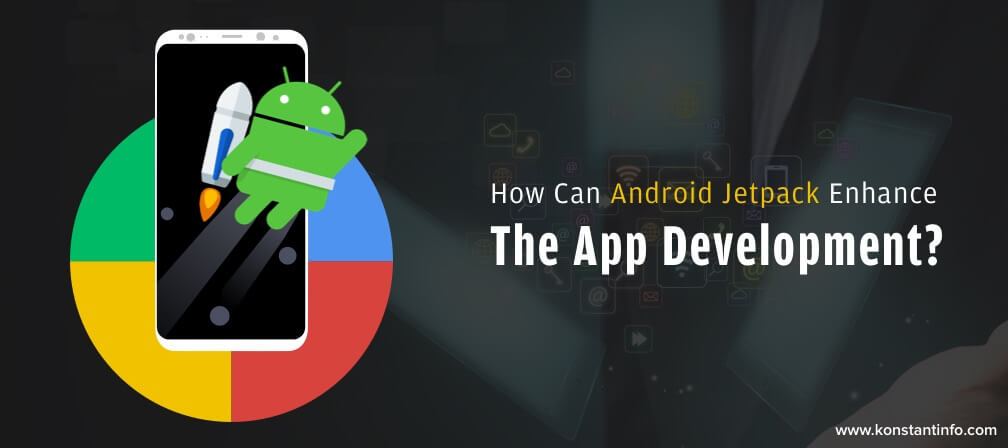
Do not worry about what code goes where. No need to be lifecycle aware. Write proper modularized production ready code without extra defense checks.
Available with Android Studio 3.2 and above, Android Jetpack is a set of Android components that have been designed and optimized for Kotlin. It is inspired by Support Library in Android and is next generation of components and tools. It is even backward compatible with a specific Android API level. Programming best practices include assimilation of support libraries in code. It further depends upon the range of platform versions that your app targets and the API’s that it uses. Some support libraries were newly refactored and were given the name of AndroidX.
In very simple words, Android Jetpack is a set of components and libraries, similar to existing support libraries in Android. Android Jetpack is built in a way such that they provide their functionality independent of any version providing backward compatibility.
Here’s time for your question. This is one to chew on! Why is Android Jetpack required when we already have Support libraries?
Android jetpack can be considered as the successor of support library. It maintains backward compatibility with Android features and leverages new ones. It synchronizes all the support libraries in one place. Almost every app in play store makes use of support libraries. Android Jetpack combines support libraries and other 5 new components which are broken down into four classes: Architecture, foundation, behavior, and UI. Jetpack components come in form of unbundled libraries and are not part of existing Android support library. But they can be used as and when required.
Support library 1 + Support library 2 ……. + Support library n = Android Jetpack
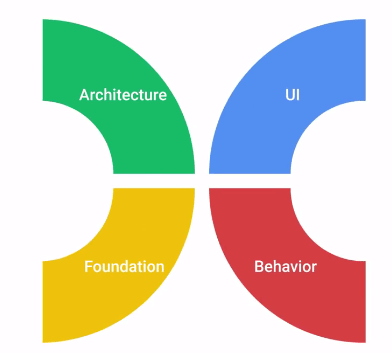
Each component is individually adaptable, built to work together and backward compatible.
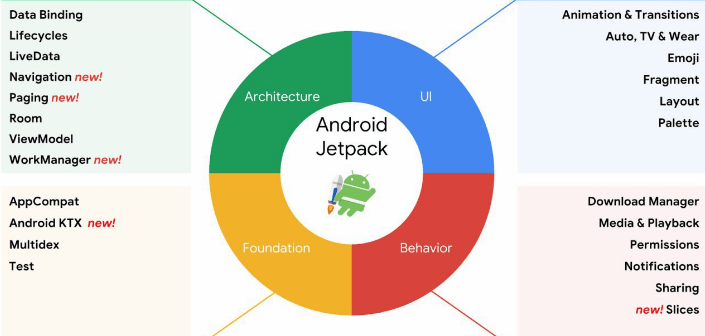
Google has provided few new libraries along with Android Jetpack – WorkManager, Navigation, and Paging. All of these are framed around simplifying issues faced by Android developers like long-running asynchronous tasks, handling the navigation back stack (and it’s not just for fragments!) and loading a subset of the large dataset into a Recycler View.
Android Jetpack components are individually adaptable, but these are built to work cohesively. These also take advantage of Kotlin language features that make the developer more productive.
Android Jetpack helps manage tough activities like background tasks, navigation, and lifecycle management so that developers can focus on the need of the application
Integrating modern design practices, Android Jetpack components eliminate the possibility of crashes and less memory leaked with backward-compatibility baked in.
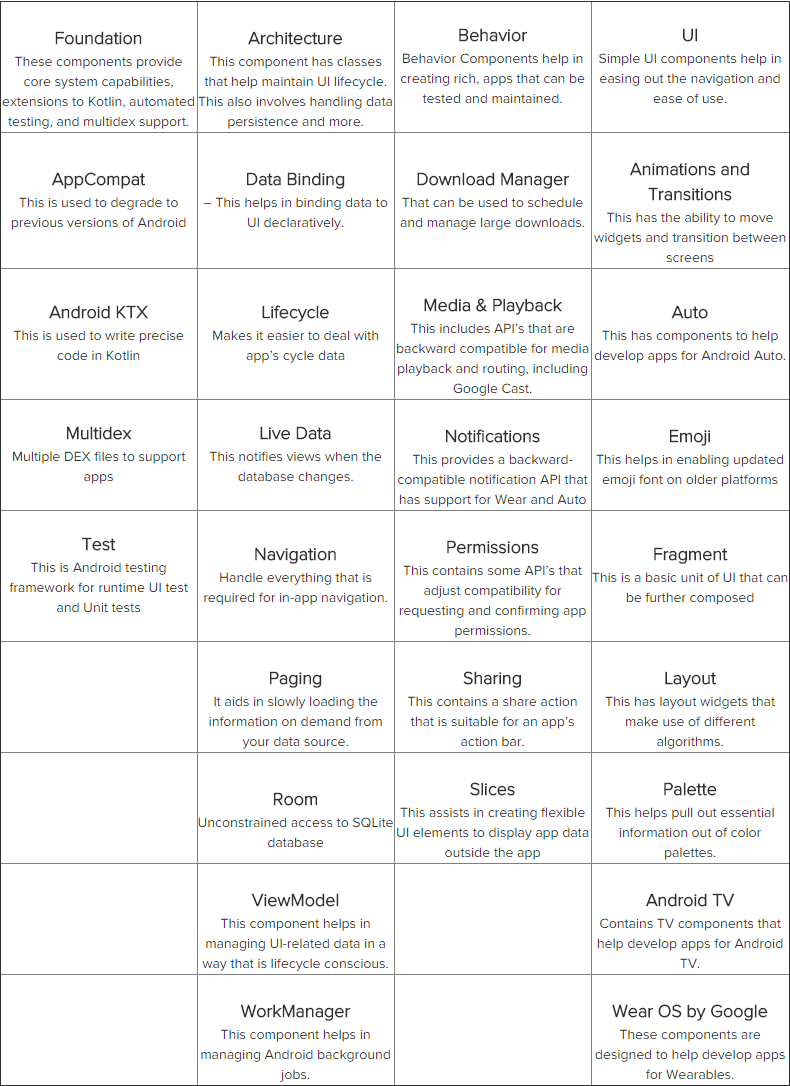
Step 1: Launch Android Studio 3.2 or higher and enter detailed information in Create Android Projects and Target Android Devices
Step 2: Add an activity to mobile screen appears that offers a variety of templates to be used in starting the project. The Activity and Fragment + ViewModel are designed to integrate Android Jetpack into the app. Click the template and then click Next.
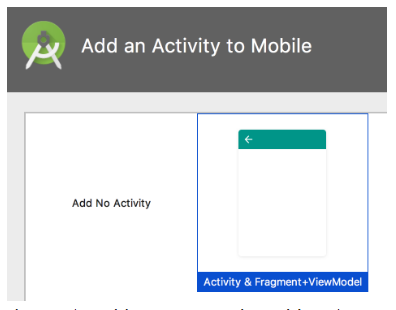
Activity and Fragment ViewModel Template
(Source: https://developer.android.com)
Step 3: Enter names of the initial activity, fragment and ViewModel object on the configure activity screen. A fragment package path can also be added. Click Finish.
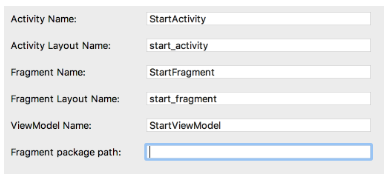
The configure activity screen for Activity & Fragment + ViewModel Template
(Source: https://developer.android.com)
Java folder in the project reveals a few classes like StartActivity, StartFragment, and StartViewModel.
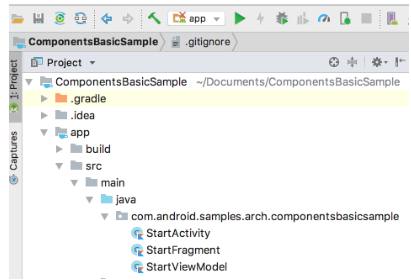
Classes that Activity & Fragment + ViewModel template puts in the project
(Source: https://developer.android.com)
StartActivity is the point of entry within the application. Also known as a stub of an activity, it appears on app’s initial screen and serves as a container for the fragments.
StartFragment acts as a stub of an initial Fragment to be used in the app.
StartViewModel acts as a stub of an initial ViewModel to be used in the app.
Step 4: Implementing View Model object
Step 5: Configuring Grade File
Know more about Android Architecture Components here.
Hate to dredge the past; you have a better way out. Android Jetpack was one of the biggest announcements in recent Google I/O Developers Conference 2018. It is streaming. It’s pretty innovative. It’s giving eccentric developers an Android chant. More attractions nearby! It helps manage UI component lifecycle and handle data persistence at the same time. Now you do not have to look around and think about the components to build an android app. It’s right here in one comprehensive package.
Also read: How Much Does It Cost to Develop an Android App?
But why should I care? Safety glasses on! On the surface, components of Android Jetpack might not seem that impressive individually. Designed in a way, so that you do not have to use all of them in one go. Rather, you can select which one you wish to use (Can make use of Navigation component, simultaneously with Conductor library). As you hire an android app developer, they will be the first ones who will come across the guidelines that come along with Android Jetpack, as Google has taken the next step in providing some possible guiding principles. While, onboarding new member and maintainability are primary concerns at the time of creating our mobile apps, it is equally important to decide what libraries and patterns must be adopted. Adopting a part of these libraries and guidelines will not only enhance the timeline for upcoming developers but will also speed up the development process.
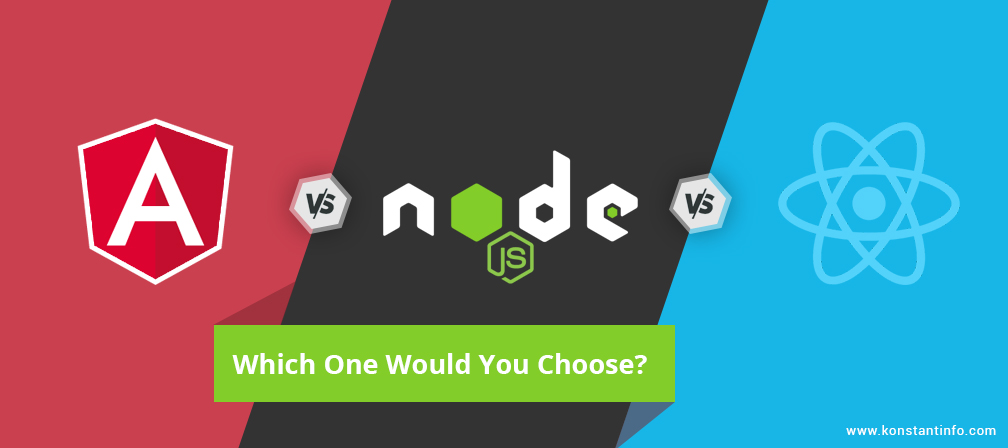

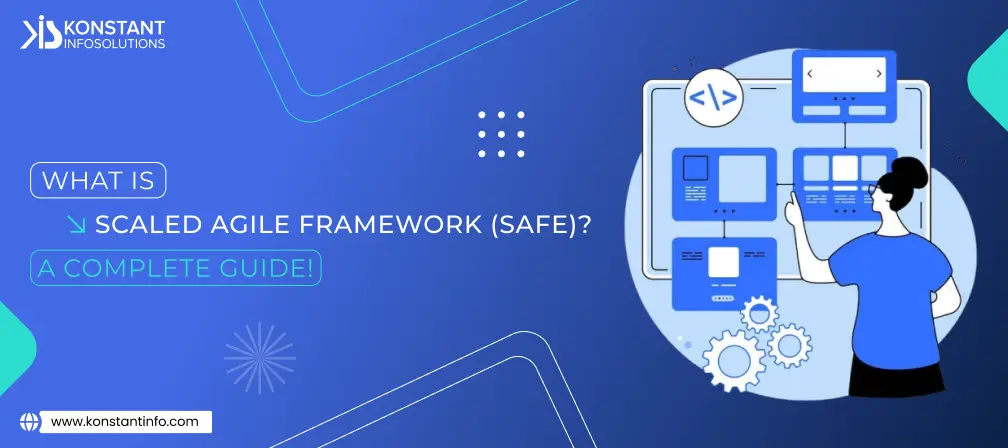
Neeti Kotia is a technology journalist who seeks to analyze the advancements and developments in technology that affect our everyday lives. Her articles primarily focus upon the business, social, cultural, and entertainment side of the technology sector.
Or send us an email at: [email protected]